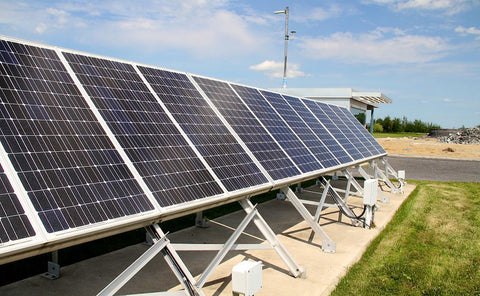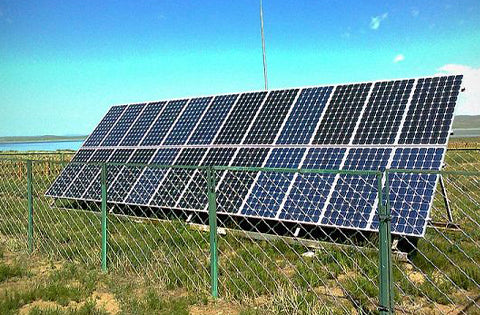Last time we summarize five common misconceptions of solar power, which include the problems of installation, cost, pay period and whether solar panel can work at night. This time, SOLARPARTS will continue to guide you to uncover another myths of solar power.
6: Only some states offer solar incentives
Skeptics of solar power will always perpetuate the solar energy myth that only certain states offer incentives or rebates for solar installation. The reality is that virtually every state offers some form of incentive, and most states offer multiple incentives, whether it be personal tax credits or property tax incentives. All residential solar systems are available for a 26% Federal tax credit for new installations from now through 2019.
7: It`s better to wait until solar panels come down in price
Since the late 1970s, the costs of solar has decreased from around $76/watt to today’s rates of approximately $1.50/watt. This significant drop in pricing has to do with a combination of improved technology, increased consumer demand and greater availability of credits and rebates. In many states, a household can have solar installed for less than $10,000. Additionally, doing the installation yourself will save even more money.

Because the costs have dropped so significantly, and because solar panel installation is currently heavily incentivized, it’s not necessarily a better strategy to continue to wait for better economies of scale. The notion of waiting to save money is a fallacy that many people are falling for. The truth is that the cost of solar power may continue to fall, but it won’t do so as dramatically as what we’ve seen in recent years. Additionally, many tax credits and incentives have expiration dates on them, so waiting could eventually mean a loss of funding for your solar installation.
8: You need to live in a warm climate
One of the most damaging solar energy myths is that your home needs to be located in a warm and sunny climate for solar panels to work properly. In reality, solar panels harness the sun’s energy — not its temperature. Therefore, solar panels work just as well, if not better, in colder climates as opposed to areas with high year-round temperatures.
Cold climates are also typically affected by high energy costs for lighting and heating, particularly during winter months. Solar energy can help offset these energy costs in regions where conventional electricity rates are higher. Many cold-climate dwellers are also concerned about their solar panels being covered in snow and not working properly. Solar panels in cold climates can be installed at an angle so as not to collect snow.
In terms of the amount of sunlight, cloudy climates can still see tremendous success with solar energy. Germany experiences cloudy weather regularly, but is the world leader in solar power. That’s because excess energy produced during the summer months is available in the form of credits to be used during times when not as much solar energy is produced.
9: Solar panels are loud
Many people assume that solar panels will emit sound because they produce electricity. However, because solar panels have no moving parts, they produce almost no sound.
The only sound that may be apparent is the low humming sound produced occasionally by the inverter. However, unless you’re in the same room, you likely won’t hear the inverter. And if the inverter is installed outdoors, the chance of “noise pollution” within your home drops to almost zero. At night, the inverter sounds will stop completely, because the system can’t produce energy in the dark.
10: Solar panels cause roof damage
The solar energy myth that solar panels cause roof damage is far from true. The roof is actually protected and preserved by solar panels in some cases, which helps to prevent against deterioration and leaking. Solar panels can also be easily removed for cleaning, or if any repairs need to be made. Modular solar panels are installed on railings rather than directly to the roof itself. When installed, sealants and metal flashings are added to fill in gaps and create barriers to protect against the elements.

Roof repairs should always be made prior to having solar panels installed. Homeowners who prefer the DIY approach can follow instructions to create leak-free seals. If you’re uncertain about the best installation methods, professional roofing contractors can help install flashings. From here, homeowners can finish the work themselves.
The above are another five common misconceptions of solar power, keep following with SOLARPARTS to know the last five misconceptions!
Twitter: Solarparts Instagram: Solarparts
Tumblr: Solarparts Pinterest: Solarparts
Facebook: Shenzhen Solarparts Inc
Email address: Philip@isolarparts.com
Homepage: www.isolarparts.com



